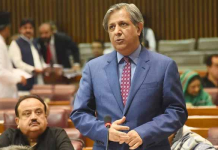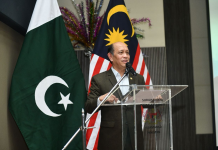By Shi Zhipeng, People’s Daily
“When I was watching a live broadcast of the Games, I could see the cooling towers with Beijing 2022 Olympic Winter Games emblem behind the athletes, as well as the Xishan Mountains in the background. What a magnificent view,” said a citizen surnamed Liu, who was trying to take a selfie with her husband in front of the Big Air Shougang, a Beijing 2022 venue.
Built in 1919, Shougang Park used to be the core production area of Chinese steel maker Shougang Group.
After Beijing won the bid to host the Summer Olympics in 2008, an unprecedented relocation project was launched for Shougang Park as the city promised that it would build a green Beijing and organize a green Olympics.
Nowadays, Shougang Park has become a place where iron and steel styles perfectly blend with Beijing 2022 elements. Citizens can experience autonomous driving, visit bookstores and exhibitions, and enjoy coffee, food, music and e-sports. Forums under various themes also take place at the park. The industrial site has turned into a space for a better lifestyle, showing new vitality.
“In the past, the footpath was narrow and crowded. We could place only two to three tables on it and the sewerage and other facilities were poor. Nowadays, the environment is much better, drawing flocks of tourists,” expressed Yin Bo, who has been running a hotpot restaurant at Shancheng alley in southwest China’s Chongqing municipality for more than 30 years.
Yin is very satisfied with the renovation of Shancheng alley carried out over the past two years.
Built along the mountain and cliff, Shancheng alley has gone through a century of vicissitudes. As the environment and facilities have been improved, the alley has been given a modern touch while maintaining its cultural characteristics.
Thanks to this, Yin has expanded his business by increasing the number of hotpot tables at his restaurant to more than 10. “To handle the high demand during holidays and festivals, we would hire temporary waiters and waitresses,” Yin introduced.
The reuse of industrial sites at Shougang Park and the micro renovation of Shancheng alley are epitomes of China’s promotion of urban renewal in recent years.
According to Wu Xili, an associate professor from South China University of Technology, urban renewal takes place when urbanization reaches a mature level, meaning readjusting and reallocating urban spaces through measures such as maintenance, renovation, construction and demolition of urban facilities, as well as optimization of public resources. It makes the city able to better satisfy citizens’ expectations and needs and adapt to economic and social development.
During the reform and opening up, China has experienced the largest and fastest urbanization in the world. The country’s urbanization rate of permanent residence has surpassed 64 percent, with some eastern coastal cities even exceeding 70 percent.
International experience and development rules indicate that in the process of rapid urban development, cities always encounter “urban diseases” including aging urban infrastructure, traffic congestion, environmental pollution and a large number of historical buildings that are difficult to be renovated.
China’s urban development has entered a phase featuring a shift from the large-scale construction of new buildings to the renovation of existing buildings and structural adjustment of newly-built buildings. More and more cities are actively carrying out urban renewal projects to achieve high-quality development through legislation, constantly satisfying citizens’ aspirations for a more livable city.
The rule of law plays a vital role in promoting urban renewal. In recent years, various areas in China have unveiled regulations to guide their urban renewal efforts.
In the past, some places relied on excessive real estate projects, showing a tendency for large-scale demolition and construction. Nowadays, strictly controlling large-scale demolition and construction and encouraging micro-renovation have been included in the legislation of areas across China.
“Urban renewal is not only about upgrading physical spaces, but also the inheritance of the spiritual lives of people, including history and culture,” said Wang Kai, director of the China Academy of Urban Planning and Design.
Many cities in China have placed importance on the protection of history and culture in their legislation.
For instance, Beijing has issued regulations on urban renewal, which emphasize the protection of history and culture and the restoration of the basic layout of Siheyuan, a traditional architecture of Beijing.
The urban renewal regulations of Shanghai mention that relevant parties will be compensated off-site when their plot ratios are affected due to the need to maintain the original appearance of historical buildings. Additional plot ratios will be provided under renewal projects where immovable cultural sites, outstanding historical buildings and historical buildings that need to be preserved are newly built.
“Urban renewal is a process of the new replacing the old. It should be carried out through comprehensive research and long-term planning. The tendency of seeking instant success and quick profits should be resisted. Undue emphasis on quantity and speed will cause losses to cities,” Xie Dixiang, a professor from the School of Architecture and Urban Planning of Guangdong University of Technology.
Xie expressed that importance should be placed on the quality of the renewal projects and humanistic care, adding that targets should be set in accordance with local conditions and appropriate measures should be taken to improve the quality of cities.


















